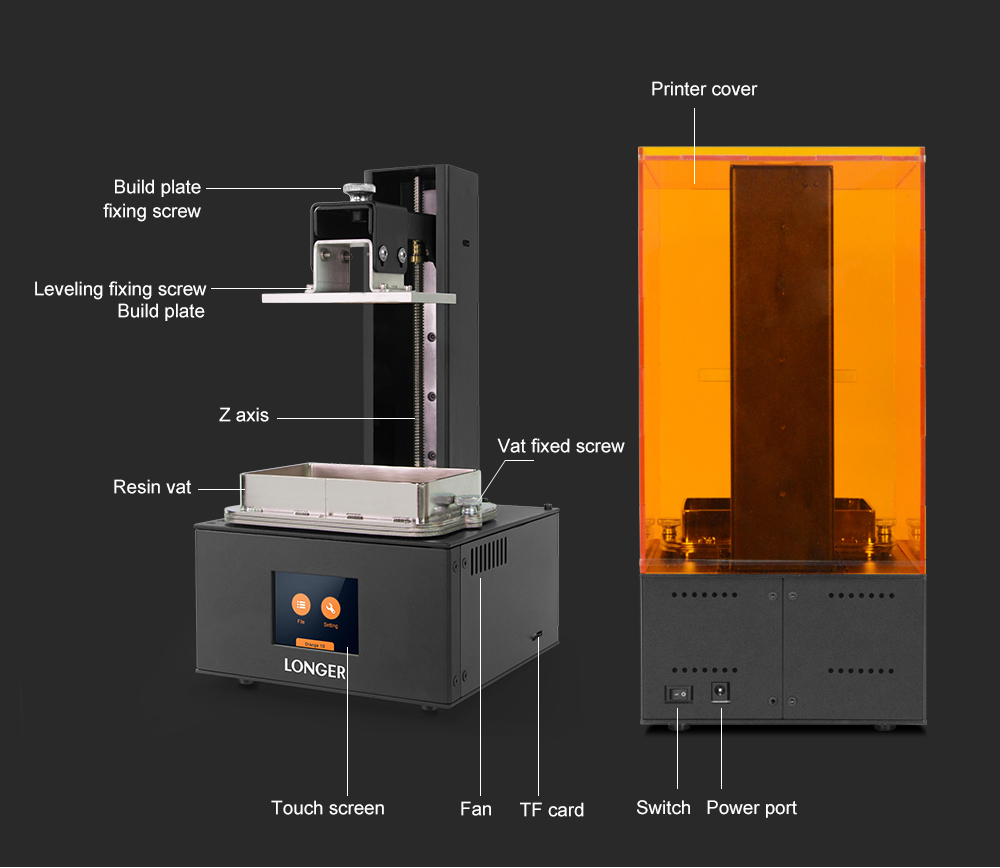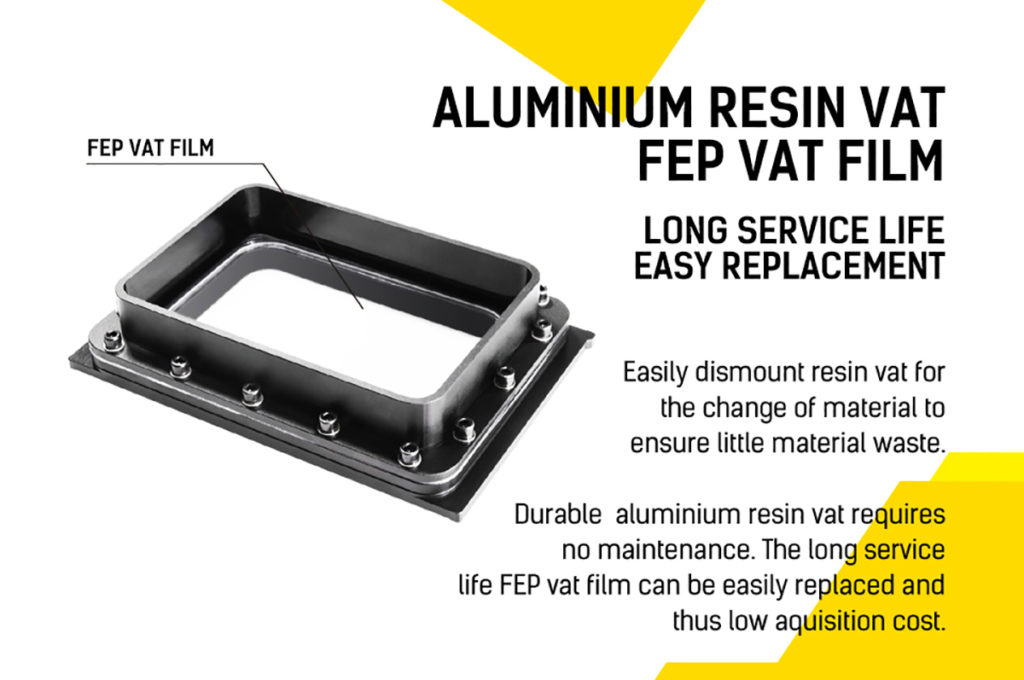Vat polymerization (SLA, DLP) has unexpectedly become a hot spot over the past year due to the effects of material companies and new startups entering the market. In this series, we will look at the general outlook of the vat polymerization market for 2021. We’ll examine different segments of the market, what the market is doing, what kinds of systems are being sold and what is likely to happen over the course of 2021. In the interests of brevity, I’ll use the term stereolithography (SLA) to address the market as a whole. I know it is not technically correct, since we have other technologies, light sources and methods now, but it will save all of us a lot of time. I also believe that vat polymerization is a particularly ugly term.
Desktop SLA systems range from $160 to $1,500 and provide access to the technology for many first-time users. Pro SLA systems range from around $3,000 to $12,000 and provide consumers and businesses with prototyping and, in some cases, manufacturing. Production systems start around $30,000 and reach up to $200,000 and are exclusively used for production. The keen observer will note that these categories do not seamlessly fit but by focusing on the dedicated areas in the market, we will learn more at this point. This first post will focus on desktop systems.
Desktop SLA Systems
Market

The Longer3D Orange showcasing the main parts of SLA systems
This market has grown to be developing very quickly over the past several months. Entrants such as the Anycubic Photon, Phrozen Sonic, Elgoo Mars, Peopoly Moai, Longer3D Orange and other similar systems have shown that you can make a finicky but credible SLA system for next to nothing. Other companies, such as XYZ Printing and Flashforge, have made more complete systems (the Noble and Hunter respectively) from $1,000 to $2,500 in order to also enter the market. The biggest news generally, however, has been Prusa’s entry with the surprisingly good SL1. The market has greatly expanded from non-existence only a few years ago to several vendors selling tens of thousands of units.

The Elgoo Mars retails for $190
Sales
Some resellers are involved in this, but, by and large, the low-cost SLA boom has passed them by completely. Sales are direct and often Kickstarter is used to launch new systems. Also used by toys for businesses, these systems up and till now are mostly consumer-based. We are seeing artists and jewelers start to use them for business however.
Systems

The Flashforge Hunter showcasing its replaceable FEP film.
Higher up in the segment, we get quality linear rails and adequate light sources. Generally, many firms have realized that a focus on these two elements, in particular, will quickly get you a credible machine. Software is rudimentary as is support generally.
One interesting development is that firms used to offer their build tanks with optical film as a whole consumable. Now, thanks to Prusa, companies are offering build tanks that can be disassembled. Then, one can replace the FEP film itself. This will save users a significant amount of money in the long run. In some cases, depending on part placement on the film, you’d have to replace the build tank with every 1.5 liters of resin and tanks could cost $150. FEP film is $10 per cycle. Systems are generally open and third party resins can be used as well. DLP and SLA are mainly used, with light sources ranging the gamut from off-the-shelf DLP, LCD, PicoLED and lasers from smoke machines. Wash and cure stations are often offered as well.

Anycubic’s Wash and Cure station.
Recommendations

XYZPrinting’s printing suite
Software is the main challenge here and is likely to be the particular path to better consumer experiences and results ultimately. A focus on software will bring outsized benefits. On the whole, it seems as if resin knowledge in OEMs is rudimentary at best. A solid grasp of photopolymers will lead to many more functional materials. Hiring materials scientists and chemists will therefore bring outsized benefits. The markup on resins is huge, greater than 700% in some cases. This is where the money is to be made. Partnering with a resin firm to deliver and sell proprietary resins that will work well on everyone’s systems is the prize here. Application focus would seem to be the fastest way to go from this segment to a higher one (e.g., the Flashforge Dental 100).
Critical Issues
Generally, the safety considerations are insufficiently highlighted. Some resins may be toxic and all will cause skin irritation and perhaps contact allergies. Some may be carcinogenic. Touching wet uncured parts, the resins themselves, and having droplets land on one’s body is a hazard, especially long term. This needs to be more explicit in both marketing literature and user information.
These materials can not be recycled in any meaningful way. This is an issue long run. With consumer sentiment squarely against wasteful polymers, wait till they find out about thermosets!
Recommendation for Competition
I wouldn’t enter this market right now, as it is very stormy and subject to change. If you have a system that significantly reduces mechanical stress on the part as it is pulled off of the screen or have a completely new way of doing DLP, then perhaps think about it. Another me-too machine right now, however, will be a tricky thing to position. I’d rather put my money in a direct-to-consumer resin startup that delivers safer materials at a reasonable cost. At she same time, offer white-label resins in partnership with OEMs and you’ve got a wonderful business. There is remarkably low activity in resins when compared to machines.
2021 Outlook
We would still expect growth in units and in overall material sales in this segment for the year. Many users are getting into stride and seem to have increased their usage rates recently. The first students and others are unlocking these systems for entrepreneurial activity. Yes, some players are bound to get pushed out very soon, but I would expect continued growth in the near term.
Subscribe to Our Email Newsletter
Stay up-to-date on all the latest news from the 3D printing industry and receive information and offers from third party vendors.
You May Also Like
Profiling a Construction 3D Printing Pioneer: US Army Corps of Engineers’ Megan Kreiger
The world of construction 3D printing is still so new that the true experts can probably be counted on two hands. Among them is Megan Kreiger, Portfolio Manager of Additive...
US Army Corps of Engineers Taps Lincoln Electric & Eaton for Largest 3D Printed US Civil Works Part
The Soo Locks sit on the US-Canadian border, enabling maritime travel between Lake Superior and Lake Huron, from which ships can reach the rest of the Great Lakes. Crafts carrying...
Construction 3D Printing CEO Reflects on Being Female in Construction
Natalie Wadley, CEO of ChangeMaker3D, could hear the words of her daughter sitting next to her resounding in her head. “Mum, MUM, you’ve won!” Wadley had just won the prestigious...
1Print to Commercialize 3D Printed Coastal Resilience Solutions
1Print, a company that specializes in deploying additive construction (AC) for infrastructure projects, has entered an agreement with the University of Miami (UM) to accelerate commercialization of the SEAHIVE shoreline...





























